Do air purifiers make breathing easier during allergy season?
Pollen, pet dander, mold: Different allergies, different needs
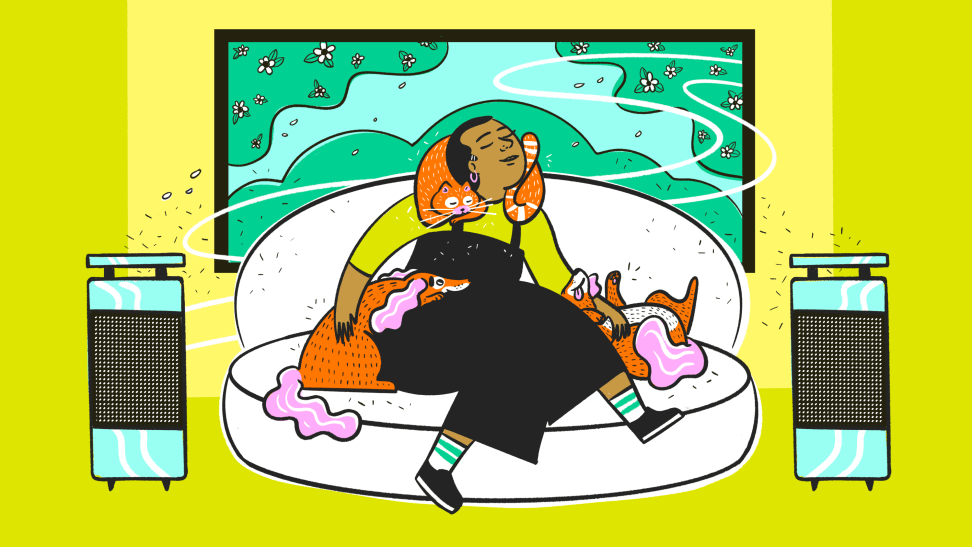 Credit:
Reviewed / Tara Jacoby
Credit:
Reviewed / Tara Jacoby
Products are chosen independently by our editors. Purchases made through our links may earn us a commission.
The joys of spring: warmer weather and flowers in bloom. For millions of seasonal allergy sufferers in the United States, warmer weather can also mean ugly allergy symptoms like itchy eyes and a runny nose.
Most seasonal allergies are caused by pollen. In the spring, trees are the main culprit; grasses follow in the summer, then weeds in the fall. If your allergies peak at certain times of the year, then it’s likely you’re allergic to one or more of these pollen varieties.
However, not all allergies are seasonal, and not all airborne allergens come from the great outdoors.
Pet dander can make our furry companions a year-round source of irritation. Mold in damp basements or caused by water damage from leaks or floods can trigger mold spore allergies. Dust mites may be the most unpleasant allergy source, lurking in our carpets and furniture and spreading allergies with their airborne poop.
The American Academy of Allergy, Asthma, and Immunology gives in-depth info on the major causes of allergies. If this sounds like you, it’s time to consider getting an air purifier for allergies.
Do air purifiers reduce allergies?
Pollen, dander, mold, and dust mite allergies are all caused by airborne particles. An air purifier with excellent particle trapping performance will clean the air and cut your chances of an allergic reaction. Sounds like a good alternative to allergy shots to us.
Many air purifiers have an activated carbon filter. This absorbs chemicals, more specifically volatile organic compounds (VOCs), and although it’s a nice feature to have in a purifier, it’s not usually needed for allergy prevention.
If allergies are the main reason you're looking at air purifiers, you should look for the presence of a HEPA or True HEPA type of filter. While, according to the EPA, there are no requirements that need to be met for a brand to claim that a filter is a HEPA filter in a consumer product (there are requirements on HEPA air filters in industrial settings), there seems to be general agreement that a HEPA/True HEPA filter can remove 99.97% of particles that have a diameter of 0.3 microns.
Most airborne allergens have diameters in the range of 0.1 to 100 microns, with pet dander on the low end and plant allergens on the high end. True HEPA and HEPA filters that meet the aforementioned standard will be able to remove most of the airborne allergens in your air.
However, if pet dander is problematic for you, consider looking for air purifiers with multiple filtration methods, as well as claims that mention removing and air pollutants as small as 0.1 microns.
Allergy causing particles come in various sizes, so knowing the source of your allergy will help you choose the right air purifier.
How can I help my air purifier for allergies to do its job effectively?
1. Close all windows and minimize the amount of air coming in from outside
If allergens can make their way into your home from the outside, that increases the length of time that the air purifier will have to run to eradicate airborne allergens. With your windows closed, the air purifier only has to clean the existing air in the room, without dealing with an additional source of pollen and dander.
2. Maintain your air purifier
Most air purifiers require you to replace or clean the filters every 6 to 12 months. As the filters start to clog, your air purifier will start to struggle more and more when it comes to removing allergens from your air. Regular filter maintenance will ensure that your air purifier is always working at its best.
3. Use your air purifier
This is pretty obvious, but people who buy air purifiers sometimes don't turn them on because the fan noise can prove to be disruptive during conversation or quiet times. Most air purifiers with Wi-Fi or Bluetooth connectivity can be set to run on a schedule, or turned on while you're away from home.
While you're home, use a lower fan setting, and if possible, use higher fan settings when you can stand it.
Choosing the right size of air purifier
As well as choosing an air purifier with filtration that’s appropriate for your particular allergy, you also need to take into account the room size where you’ll use it.
Most air purifiers show the square footage that they can cope with. If you get an air purifier that’s too small, it will still clean up your air, but it’ll be a slow process.
Our picks for best air purifiers based on your allergy
Seasonal pollen
Pollen grains are among the larger airborne irritants, reaching up to 100 microns across, slightly more than the thickness of human hair.
Their size means they quickly settle on floors and furniture once in your home. This seems like a good thing, but it means they’ll hang around and, unless they’re cleaned up, can easily get airborne again.
The best air purifiers for pollen need powerful fans to move as much air as possible and grab those pollen grains quickly before they settle.
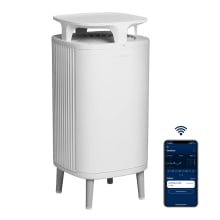
This air purifier works overtime in your home to catch 99% of dust particles before it settles by using dual air intake and vortex airflow.
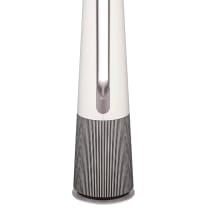
Not only does the LG Puricare Aerotower use a sleek, ergonomic design but it also uses UVnano LED Technology to kill 99.9% of bacteria on its fan blades.
Pet dander
Pet dander, dust mite crud, and mold spores are typically much smaller than pollen. Most particles are less than 20 microns across, and a significant portion of the particles are as tiny as 1 micron or less. This means they stay airborne easily and need an excellent particle filter to trap them.
HEPA filters are perfect for these allergens as they are rated on how efficiently they remove particles as small as 0.1 to 0.3 microns.
Pet dander comes with another challenge for your air purifier: pet hair. It can quickly clog up filters and stop them from working efficiently. If you have pets, a prefilter that’s easy to clean is essential for protecting that delicate HEPA filter.
For pet dander allergies, we recommend the following for their combination of washable, easy-access pre-filters and HEPA particle filters.
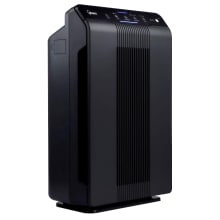
The Winix 5500-2 exceeded our expectations during testing for its accessible design and overall efficiency.
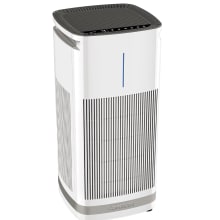
The Cuisinart Purxium covers up to 1000 sq. ft. two times every hour and 500 sq. ft. four times so you can continue to breathe clean air.
Dust mites and mold spores
For other small particle allergies like dust mites and mold spores we recommend the following for their high quality HEPA filters and effective particle filtering in our lab tests.
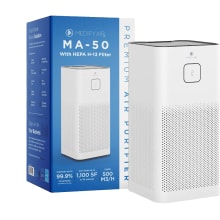
If you’re looking for an air purifier with a powerful HEPA filter, look no further than the Medify MA50.
Other ways to reduce allergies
Air purifiers help, but effective allergy relief needs a combined approach. If it’s pollen season, keep your windows closed. Even if it’s tempting to let in a cool breeze, it can come laden with pollen.
If pet dander is the problem, and assuming the beloved family pet will stay, you have options. Pet hair targeting vacuum cleaners, and other dander reducing products will keep hair and dander to a minimum.
For mold, be vigilant for damp spots, and if you see mold follow our suggestions. Mold needs moisture, so a dehumidifier will also help. If you keep relative humidity at around 50%, mold finds it tough to grow.
Dust mites also like humid conditions, so just like for mold, a dehumidifier is your friend. Given that carpet and soft furnishings are their home, a vacuum cleaner with a HEPA filter can also reduce the number of allergens that are already present.



